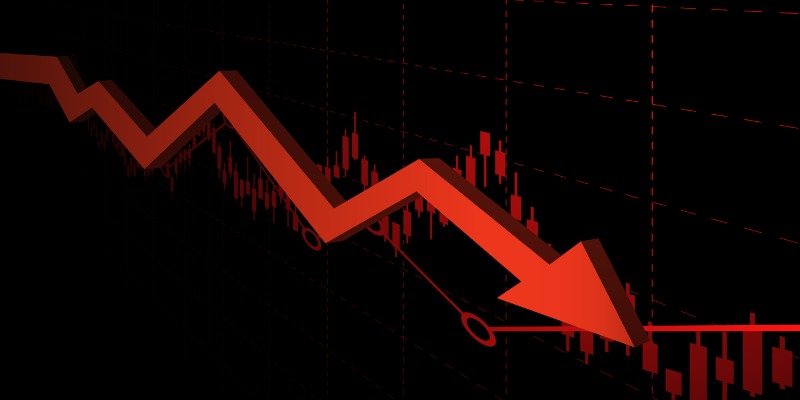The rocky ride continues…
On Thursday, stocks closed deep in the red again—the S&P 500 and tech-heavy Nasdaq fell more than 2%. On Friday, both indices fell around 3%. And as of this morning, both are down around 4%.
Year to date, the S&P 500 is down 18%. The Nasdaq has tumbled 28%.
And while both indices finished roughly breakeven in May—with a handful of big one-day gains—2022 has been a “one step forward, two steps back” kind of market.
|
The last three bitcoin halvings saw gains of 667%, 2,867%, and even 7,976%. Now it's this crypto's turn. |
But if you’ve been following along, you know this volatility is presenting a great opportunity to buy world-class businesses at big discounts.
Last week, RiskHedge Chief Analyst Stephen McBride explained how big tech stocks like Amazon, Google, and Facebook have become the “new” value stocks:
Not only are some of the world’s best, fastest-growing tech businesses trading near their lowest valuations ever… they’re now cheaper than century-old companies that barely grow!
You don’t get an opportunity like this often. It’s only happened a few times in history, and it’s usually a great time to put money to work.
Of course, for most investors… it’s not easy to buy in this environment.
It’s also not easy to hold onto stocks that are falling—even if they are great businesses you have high conviction in.
Today, Stephen shares some tips to help you stay the course… He’ll show you two of today’s biggest distractions, and what to focus on instead.
***
Chris Reilly: Stephen, in your new issue of Disruption Investor, you said something that stood out to me:
“Don’t focus on stock prices.”
That’s easier said than done in this market…
Stephen McBride: You’re right, Chris. It’s hard not to fixate on stock prices right now. And as I’ve been saying, this year’s market rout is presenting some incredible entry prices in great businesses.
But focusing on price alone is a big mistake.
Take it from superinvestor Warren Buffett who said stock “prices don’t tell me anything about a business” in his first TV interview in 1985.
I often get asked: “Stephen, how do I hold onto great stocks in rough markets?”
You must first recognize that when you buy a stock, you’re buying a partial stake in a business. And the business performance is what you should focus on, not the stock price.
Have you read Thomas Phelps’ 1972 classic, 100 to 1 in the Stock Market? Phelps shows drugmaker Pfizer’s key financial metrics over 20 years. It shows steady, unstoppable growth… and consistently rising profitability.
 Source: 100 to 1 in the Stock Market
Source: 100 to 1 in the Stock Market
Phelps wrote: “Would a businessman seeing only those figures have been jumping in and out of the stock? I doubt it.”
I agree.
Investors who held Pfizer’s stock through this period made roughly 25X their money.
Chris: But I bet only a fraction of Pfizer shareholders held on to the stock for 20 years to realize those gains...
Stephen: You’re almost certainly right. One of the hardest things to do as an investor is “nothing.” Pfizer stock surged throughout the ‘50s and ‘60s, but it didn’t go up in a straight line. There were big dips and long periods of underperformance. I’m guessing many investors got scared, impatient, or both and sold during these rough patches.
But if they ignored the stock price and focused on the business… they would have been much more likely to realize those 25X gains.
Chris: We know that now in hindsight. But the hard part is not knowing at the time whether a dip is temporary, or the beginning of the end for a stock. Right? And it’s extra hard when the media is clouding your judgement with scary headlines, like today.
I saw a Forbes article that said a growing number of Wall Street experts are warning about rising recession risks. A recent CNN headlines says, “Most CEOs are bracing for a recession.”
How do you stay the course with so much doom and gloom out there?
Stephen: The only thing worse for your portfolio than fixating on stock prices is fixating on the news. For one thing, markets ALWAYS bottom when the news is terrible.
The Wall Street Journal opened with “How low can stocks go?” the day markets bottomed after the ‘08 meltdown. And I’m sure you remember all the negative headlines at the trough of March 2020’s COVID crash.
The news won’t turn positive before stocks bottom. It might simply get “less bad.”
As my friend and hedge fund manager Mark Yusko likes to say: “You make the most money in investing when things go from truly awful to merely bad.”
In any case, all that matters for investors is whether the businesses you own are growing their sales and profits.
Chris: It sounds simple when you put it that way.
Stephen: Most investors try to do too much. The research shows, unequivocally, the more frequently you buy and sell stocks, the worse your returns tend to be.
Look at this chart from a 1999 study titled: Do Investors Trade Too Much?
The fewer trades an investor made (green bar), the higher their net return was (black bar).

A few years ago, brokerage giant Fidelity studied its 80 million accounts.
It found the best-performing accounts all had one thing in common: The owners either forgot about the account or had passed away!
These investors weren’t trading in and out of positions... they weren’t trying to “time” the market. They weren’t doing anything. Yet their portfolios blew everyone else’s out of the water.
Chris: So your guidance boils down to: Buy and hold great businesses you believe in.
For RiskHedge readers looking to get started today, they can access your “Power Law” investment briefing here, which details three stocks worth scaling into right now… and much more.
Chris Reilly
Executive Editor, RiskHedge



